Clear ice is fairly easy to make and it create impressive ice cubes that will wow your guests. This is, if you make the ice cubes properly.
I've noticed that there are some really common mistakes people make when trying to make clear ice that leads to them having cloudy ice or the ice not being as clear as they would like.
If you can avoid these common mistakes then you're ice is much more likely to come out crystal clear and be near perfect.
Let’s have a closer look at the biggest mistakes when making clear ice and how you can avoid them:
1. You Don’t Freeze The Ice Omni-Directionally
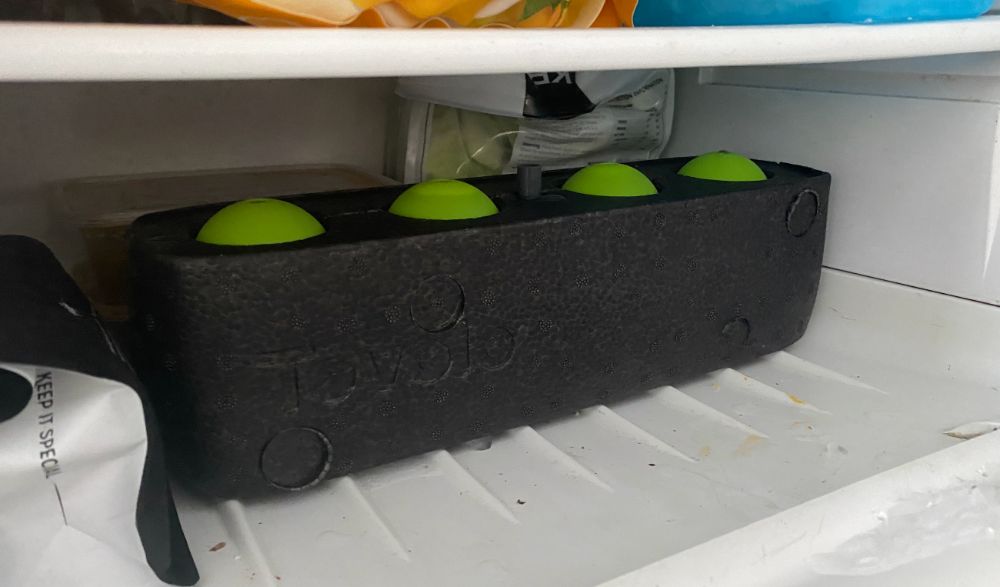
This is by far the biggest mistake I see people making when trying to make clear ice.
They might use boiled or filtered water but they just put it in a regular ice cube tray and place it in the freezer expecting crystal clear ice to come out. It won't…ever.
When making clear ice you must freeze the water omni-directionally (from one direction). Doing so pushes the air bubbles and impurities out of the ice as it freezes and leave you with crystal clear ice.
If you don't force your ice to freeze omni-directionally what happens is the outside of the ice freezes first and then the air bubbles and impurities get pushed towards the middle of the ice cube where they get stuck.
The difference between clear and white ice is that clear ice has no air bubbles or minerals trapped in it, whereas white ice does. These air bubbles and minerals cause the ice to have a cloudy appearance.
When making clear ice you want to ensure there aren’t any air bubbles trapped in the ice.
Freezing from the bottom up is best, but for most of us we don't have commercial clear ice makers. Instead you can buy clear ice molds to use at home that insulate the sides and bottom of the ice cubes and force the ice to freeze from the top down.
Above you can see the Tovolo clear sphere ice maker which I have in my home. It's one of the best ice sphere molds you can buy as it's affordable, has a small profile and makes 4 large ice balls at a time.
It makes fairly clear ice spheres. You can see the styrofoam insulation around the ice sphere molds. This means only the top of the ice molds are exposed to the cold of the freezer and thus they freeze from the top down. If you want to make ice balls like me then check out the Tovolo clear ice sphere maker at Amazon.
To ensure your ice has no cloudiness you must freeze it omni-directionally.
If you don't have a clear ice sphere mold you can still make clear ice using nothing but a small cooler.
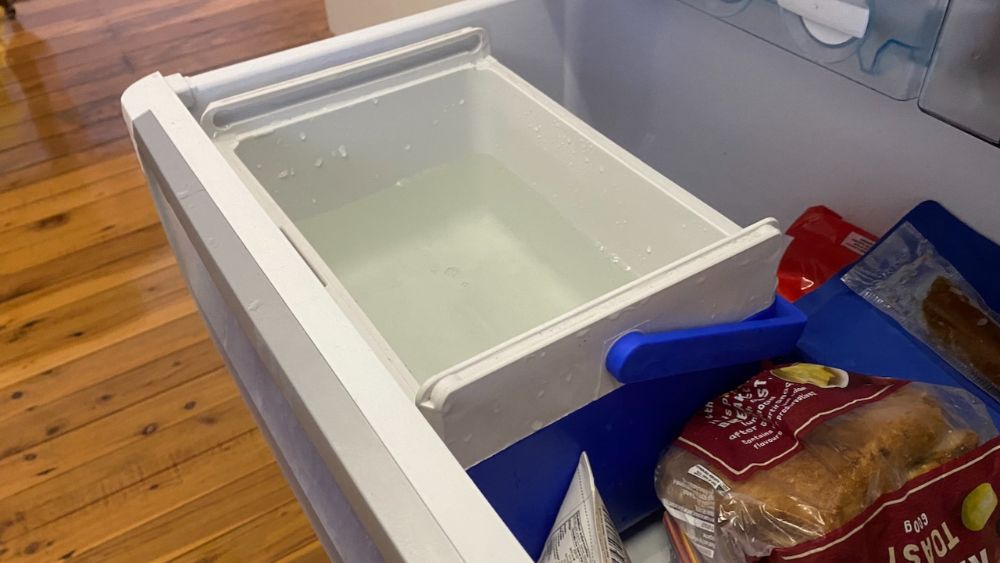
The simplest way to freeze water omni-directionally is to place the water in a cooler box with the lid off. It's a great way to get clear ice with little to no expensive equipment.
Then put the cooler box in the freezer and allow the ice to freeze from the top down.
After approximately 24 hours take it out of the freezer and turn upside down in the sink. You'll notice the ice on the top is crystal clear while down the bottom it'll either still be water (which you can discard) or it'll be cloudy ice which you can cut away and get rid of.
2. Your Water Has Lots Of Minerals And Impurities In It
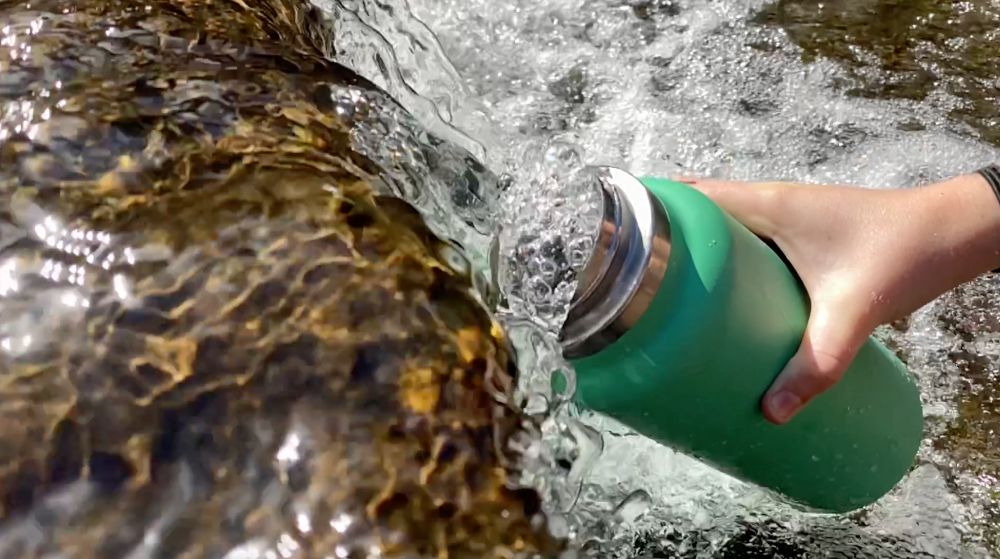
Usually you would probably use whatever water you have available to make ice. However, when making clear ice you should use filtered, distilled or purified water.
This will help ensure your ice freezes crystal clear.
See clear ice differs from white ice because it contains no air bubbles or minerals. But regular tap water contains a lot of dissolved minerals as well as dissolved gasses from the atmosphere.
While these are harmless to drink or consume, once the ice starts to form these impurities will make bubbles in the ice and lead to it being less clear.
To reduce the minerals and impurities in your water you should not use hard water to make clear ice.
Hard water contains a lot of different salts and minerals. These minerals will cause the ice to have an opaque appearance even if you freeze it omni-directionally.
I recommend you use only purified, filtered or distilled water to create clear ice.
If you don't have access to distilled or filtered water you can still make clear ice with tap water, it just won't be as clear as ice made with filtered water.
You can clarify you water a little bit by boiling it twice before allowing it to cool then freezing it. The boiling process causes the dissolved gasses to evaporate. It won't remove the minerals, but it will help get rid of the dissolved gases.
3. You’re Expecting Boiling Or Boiled Water To Make Clear Ice… It Doesn’t
There is a big misconception that simply boiling water and then freezing it normally will create crystal clear ice. Sorry to break it to you…but it doesn't.
Yes, boiling water helps to remove some dissolved gases from the water that will turn into air bubbles in your ice making it whiter. However, it won't remove all gasses and it does nothing for removing minerals and other impurities.
Simply boiling water and freezing it normally is one of the biggest mistakes people make when trying to make clear ice.
The videos below show experiments where they try this strategy and while the ice is maybe slightly clearer, it is in no way crystal clear ice.
Distilled and boiled water can improve your chances of having clear ice. However, the only way to ensure your ice is clear is to freeze it omni-directionally.
Using distilled water or boiling your water before freezing does remove some of the minerals and impurities that cause opaque ice.
But another element that causes opaque ice is air bubbles, which aren't removed from the water when you boil or use distilled water and will still get trapped in the middle of your ice cube making it look white.
4. You’re Freezing The Ice Too Quickly
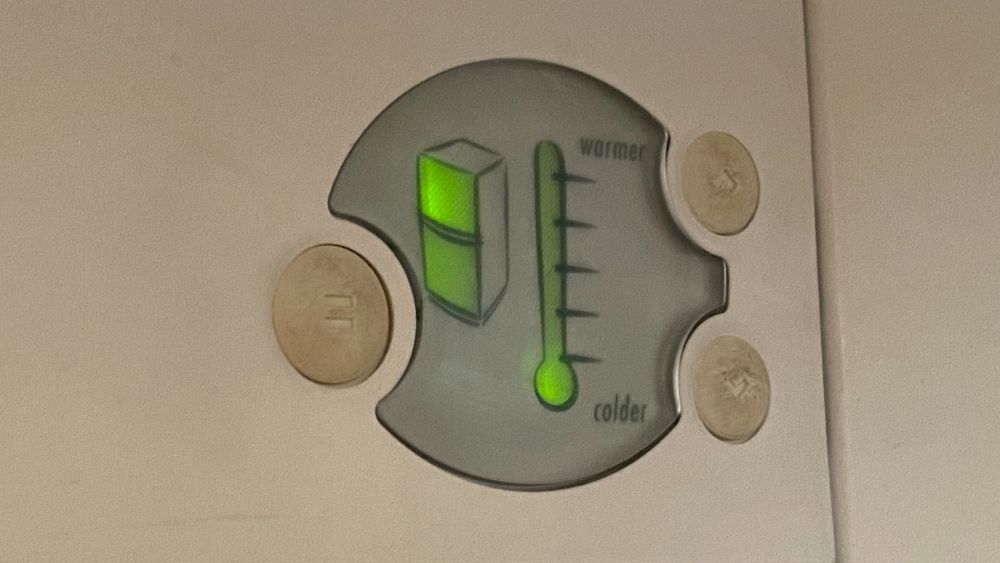
Another critical element to ensuring clear ice is to freeze the water slowly.
When making clear ice you want the water to freeze slowly from a single direction such as from the top down. When the water freezes slowly there is enough time for the air bubbles and impurities to move away from the ice as it freezes.
If you're using a cooler box to make clear ice the air bubbles and impurities will move to the bottom of the ice.
When you remove the ice from the freezer you can cut away the bottom part where the pollutants and air bubbles are trapped leaving you with clear ice.
For this to happen effectively the water must freeze slowly.
If the water freezes too fast the air bubbles and impurities will get trapped in the middle of the ice as they won’t have the chance to move away from the ice as it's formed. This leaves you with white ice.
To ensure the water freezes slowly set your freezer to its warmest setting and be patient when waiting for your water to freeze.
5. You’re Using Tap Water
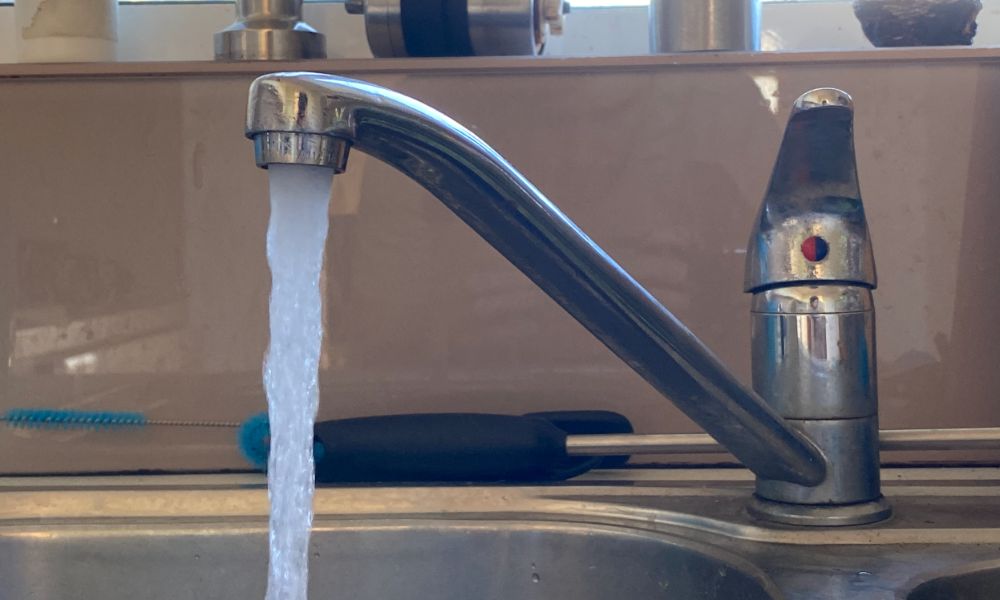
Although you can make ice using only tap water (it's something I do regularly because I'm too lazy to distill or filter it) the result will not be as effective as when you use distilled water.
However, if you're using tap water and not getting clear ice then the water may be the main culprit here.
Tap water contains a lot of dissolved gasses and minerals that turn into air bubbles in your ice as it freezes.
6. You’re Using A Cheap Ice Maker or Mold
You can buy an ice maker for as little as $30 on Amazon. These machines claim to make clear ice, but they don't always deliver on this promise. I certainly wouldn't recommend them.
A good clear ice maker will run water over a metal plate and freeze it from the bottom up, layer by layer, pushing out the air bubbles as it does. Machines like these are used in restaurants and it's why restaurant ice is so clear most of the time.
I recommend investing in a higher-quality ice maker if you intend to make clear ice regularly. Also make sure it's specifically a “clear ice maker” otherwise the ice it makes will be white.
If you don’t intend on making clear ice too often then a cooler box with a detachable lid will also work better than a cheap clear ice maker.
7. You’re Not Using An Extra Reservoir
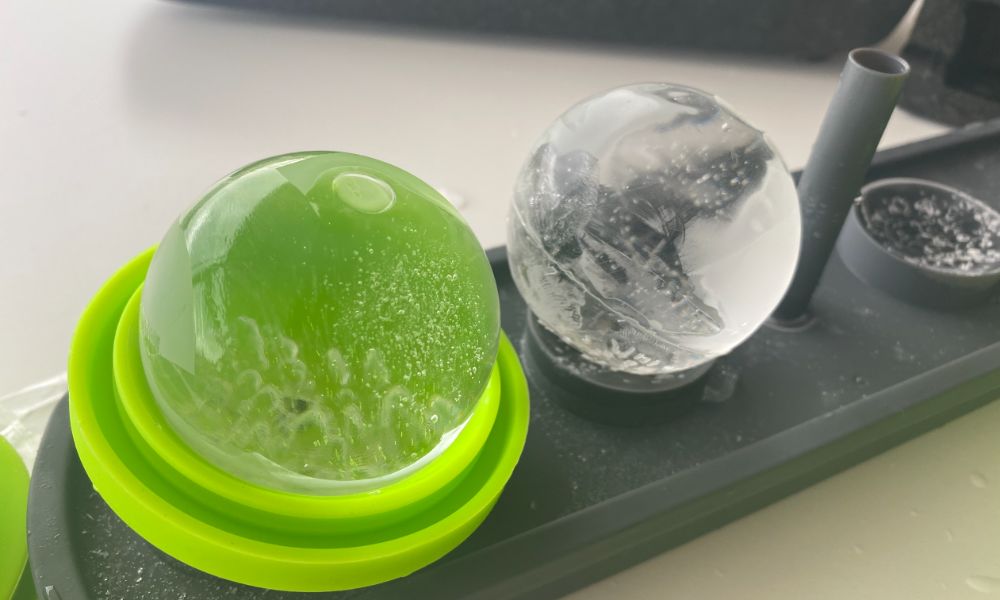
When you freeze water omni-directionally the air bubbles and impurities get pushed to the bottom of the container allowing your water at the top to freeze clear.
However suppose you don't have a water reservoir in your container. In that case the air bubbles will push back into your ice and cause it to have imperfections.
Above you can see the Tovolo clear ice sphere maker that I use at home. It has a large base at the bottom which is also filled with water and it's where all the bubbles end up.
There is a lot of water that is frozen just to make 4 ice balls. But you need the bottom reservoir otherwise the bubbles would have nowhere to go.
An extra water reservoir is simply some additional space in your clear ice maker where the air bubbles and impurities can go as the water freezes.
You can still make clear ice using your cooler if you don't have a clear ice mold.
If you're using this method we suggest removing the cooler from the freezer before all the water has frozen. This will ensure your ice is clear and the water in the bottom contains all the impurities and it doesn't freeze and push the bubbles back up into your clear ice.
8. You’re Not Circulating The Water (Or Circulating It Incorrectly)
If you have a clear ice machine that freezes from the bottom up then it’s crucial to circulate the water for the entire freezing process. This allows the air bubbles and impurities to escape from the water and clear ice.
This is really only going to be applicable to commercial ice makers as at home ice makers tend to freeze from the top down.
If you don't circulate the water while it freezes from below the air bubbles and impurities can get stuck in the ice and fail to escape out the top. This results in not-so-clear clear ice.
Continuously circulate your water if you're freezing it from the bottom.
Conclusion
Clear ice is a fun way to spice up any drink.
However, the 8 clear ice mistakes discussed in this article may prevent you from having clear ice. We hope you have learned what is causing your ice to be unclear and how you can fix it to have crystal clear ice every time.
The 8 primary mistakes when making clear ice:
- Ice Is Not Frozen Omni-Directionally
- The Water Is Full Of Minerals And Impurities
- You’re Expecting Boiling Or Boiled Water To Make Clear Ice
- The Ice Is Frozen Too Quickly
- The Use Of Tap Water
- Using A Cheap Ice Maker
- You're Not Using An Extra Reservoir
- You're Not Circulating The Water (or Circulating It Incorrectly)


